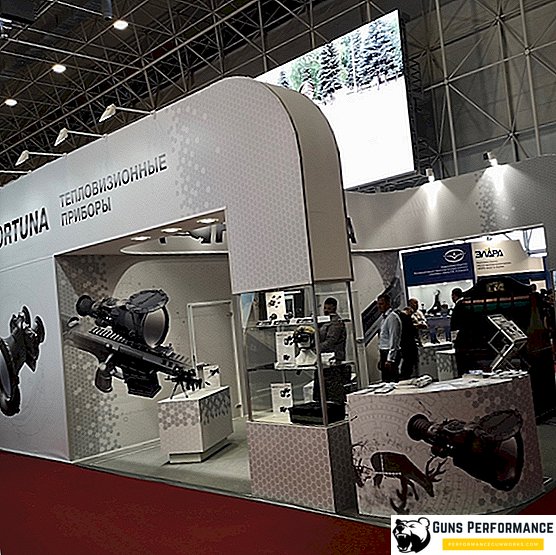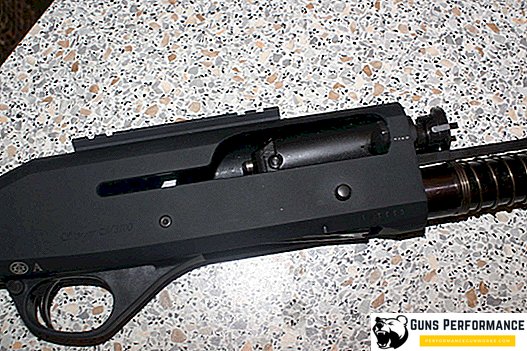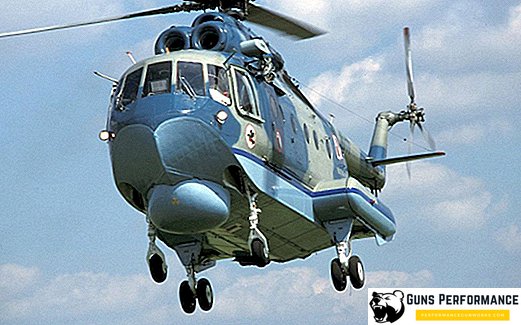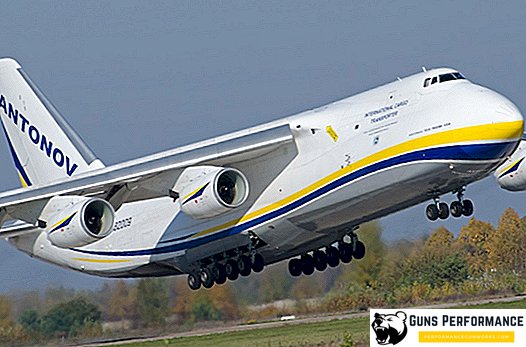One of the elements of modern aerial reconnaissance are unmanned aerial vehicles (UAVs), equipped with either a universal or specialized set of equipment. It usually consists of thermal imagers and opto-electronic cameras, as well as radar stations. Due to the limited capabilities of the onboard generator and the relatively small mass of the payload, the UAVs are not capable of simultaneously carrying several different sets of reconnaissance equipment and communication systems.
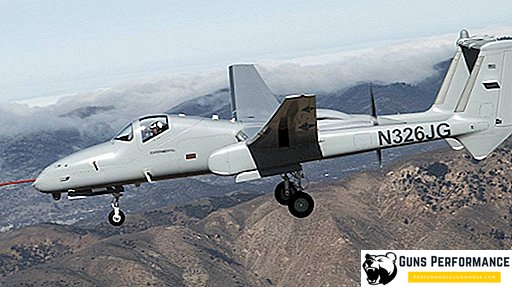
In addition, at present, UAVs without special permission cannot fly in the same airspace on a par with manned aircraft, which significantly limits their areas of application. In this regard, the United States is actively developing new hardware and technology in order to meet the requirements for improving the level of the UAV's operational intelligence capabilities. In particular, the military and political leadership of the United States continues to unify the typical composition of aviation units equipped with UAVs, with the aim of expanding the list of tasks solved with the help of this technique, including those currently performed by manned aircraft.
And with the pilot, and without
Modern UAVs have a number of restrictions on use, which complicates their use. The solution to the problem, which allows the use of reconnaissance UAVs in a single airspace with passenger aircraft, was proposed by the American company Northrop Grumman, which developed an aircraft that is easily modified from manned to unmanned.
"Northrop Grumman" in December 2018 announced the completion of a series of tests of the prospective multi-tasking reconnaissance optionally manned vehicle (Optionally Piloted Vehicle, OPV) "Firebird" ("Fire Bird"). The final serial image of the device has already been formed, in which the solution is implemented to combine the capabilities of manned and unmanned control, dictated by the desire to save operating costs, because during one Firebird mission it can solve tasks for the UAV, and where flights of those are forbidden - switch to manned option.
The serial "Firebird" can be converted from manned to unmanned version and back (including in the field for four hours.

According to the statement of the Northrop Grumman management, to convert the aircraft into UAVs, it is necessary to remove the cockpit fairing, seats and dashboard, and instead install a stabilized satellite dish and a radio transparent fairing. In an unmanned configuration, an aircraft can be in the air for 24 to 40 hours, depending on the payload installed on it.
Removing the manned system configuration and installing the unmanned equipment does not require complex work and generally reduces to unwinding the fastener and reconnecting the connectors. The ground control station is designed and manufactured by Northrop Grumman for processing, searching, storing, monitoring and displaying, in real time, infrared images or video transmitted by aircraft payload cameras. The control station is identical to the cockpit. Communication between the aircraft and the control station will be provided through a closed data line.
Impressive opportunities
LA can provide its operators with high-resolution video, infrared images and other information, performing surveillance and reconnaissance over large areas. To accomplish this task, the device is capable of carrying various electro-optical, infrared or multispectral high-resolution video cameras under the front of the fuselage for taking photo / video or infrared images in real time.

In addition, "Firebird" is equipped with three electro-optical or infrared sensors "Star SAFIRE 380" high definition and synthetic aperture radar, a laser pointer and a laser rangefinder.
Thus, when the aircraft is converted from an aircraft into a UAV, the pilot and operator of the payload are transferred to the control station. The piloted "Firebird" configuration can be used in general airspace. In terms of its intelligence capabilities, the Firebird can surpass the MQ-1C Gray Eagle and MQ-9 Reaper UAVs, as it is able to operate where the UAV data cannot be used (in general airspace). Firebird is integrated with an automatic launch and recovery system that helps automate a safe landing in the event of a communication error at the control station.
Compared to strictly unmanned competitors, the Firebird pilots can bring the aircraft into full readiness for use in a theater of operations before the staff reconfigure it for unmanned operations, and this can be done with a relatively limited logistics base, thanks to the modular equipment compartments .
Device UAV aircraft
Use on an aircraft of a single piston six-cylinder engine "Lycoming TEO-549" with a capacity of 360 hp (261 kW) greatly simplifies and reduces the cost of operation. "TEO-549" is a twin-turbo engine with intermediate cooling, which is integrated with modern electronics and sensors, which makes it compatible for use in any environment. It is designed and manufactured by Lycoming Engines. The use of this engine with a three-bladed propeller in the rear part of the fuselage significantly reduces the overall operating costs of the UAV, since the difference in operating costs of a lightweight piston engine compared to a turboprop is significant (for example, in comparison with the MQ-9, which has a turboprop engine of 900 hp .). Firebird provides unrivaled fuel efficiency, which reduces overall costs and local logistics, while improving the performance of the aircraft.
"Firebird" due to the simplicity and durability of the structure can be used both in daylight and at night, including in adverse climatic conditions. The main feature of "Firebird" is its ability to transform from an unmanned version to a manned one and back to field conditions. The hardy chassis and hard glider make it possible to use this UAV from airfields equipped with a gravel runway, as well as from field airfields and highway sections.
Firebird has one tough suspension point on each wing intended for the installation of additional reconnaissance equipment, but the possibility of integrating air-to-surface missiles onto an aircraft is also not excluded. The cargo compartment can also potentially be modified to carry small size ammunition. This will give the opportunity to classify in the future this aircraft as reconnaissance and shock.

The device is equipped with a compartment for a 1.3 cubic meter modular payload in which it is possible to install two containers with different reconnaissance equipment: optical-electronic cameras, thermal imagers, communication systems and signal relays, and a radar station. During one of the test flights, the developers installed four different reconnaissance systems on Firebird simultaneously.
Due to modularity, the complete replacement of containers with a payload takes about 30 minutes, and the installation of a completely new container takes no more than 24 hours, including setting up and debugging of onboard systems. In addition to the internal payload compartment, the aircraft has two external suspension points for different systems. With a length of about 10 meters, a wingspan of about 20 meters and a height of about 3 meters, the aircraft has a maximum take-off weight of 2300 kilograms. It can carry a payload of up to 562 kilograms, capable of flying at altitudes of up to 9.1 thousand meters at speeds of up to 370 kilometers per hour.
LTH "Firebird"
Flight technical characteristics of the aircraft "Firebird":
- crew of 2 people (optional);
- length 10.3 m; wing span of 19.8 m;
- height is 2.9 m;
- empty mass 1170 kg;
- maximum take-off weight of 2300 kg;
- payload mass 562 kg;
- practical ceiling 9145 m;
- flight duration from 24 to 40 hours (depending on the load);
- 2500 km range;
- maximum speed of 370 km / h;
- conversion time from manned to unmanned version and back - up to four hours;
- propulsion system: one 6-cylinder piston engine "Lycoming TEO-549" with 360 hp
History and prospects
The first flight of the optionally manned aircraft "Firebird" took place in February 2010, later a closed demonstration of the device for the Pentagon employees was held. "Firebird" was first presented to the public in May 2011 at the military exercise "Empire Challenge-2011", conducted by the command of the United States forces in Fort Huachuka (Arizona, USA). The main contractor involved in the design, assembly and flight tests of the airframe is Scaled Composites, a subsidiary of Northrop Grumman. Currently, two devices that have the civil registration code N326JG and N355SX participate in the trials. According to the developers, the successful completion of the tests leads to the mass production of this machine and the beginning of deliveries of the aircraft from the second half of 2019. Thanks to the onboard equipment, the Firebird can be used both for military purposes for reconnaissance, reconnaissance and surveillance, as well as by various private companies. For example, the device may be of interest to gas and oil companies for long-term inspection of pipelines.
Thus, the creation and adoption of a multi-purpose unified reconnaissance aircraft is one of the priority areas in equipping the US armed forces and special operations forces. Experts in the field of development and creation of such equipment prefer the use of modularity in structures, which allows creating a qualitatively new tool based on the apparatuses, differing in their technical characteristics, equipment composition and scope in the short term.
The adoption by the US Air Force of a multi-tasking reconnaissance manned unit Firebird will lead to a significant increase in combat capabilities and awareness of the Air Force command. Due to the modular design used on the apparatus of reconnaissance equipment, as well as the ability of the configuration in the manned and unmanned version in the field, Firebird is able to make a significant contribution to achieving superiority over the enemy in all areas of warfare.



